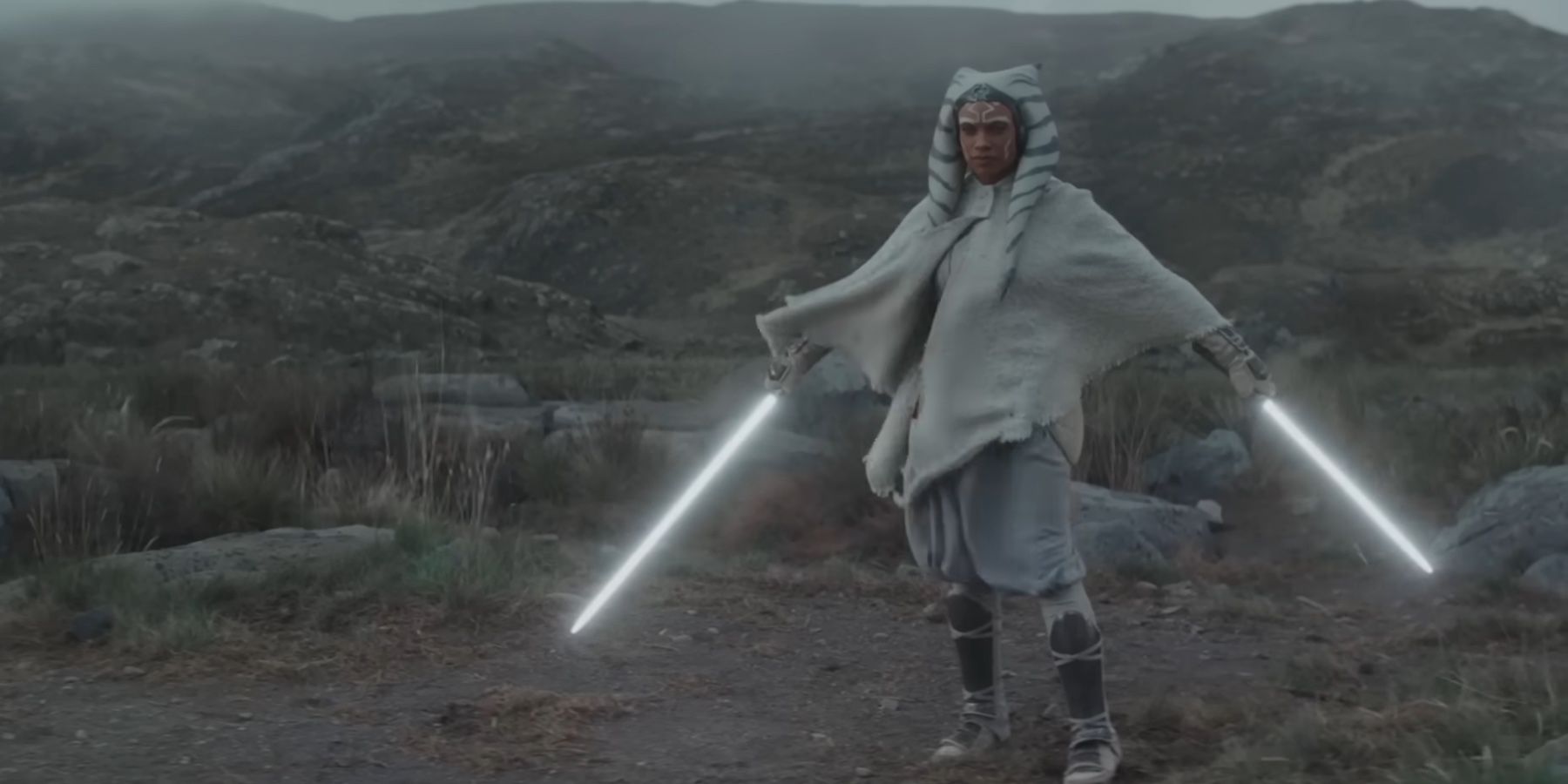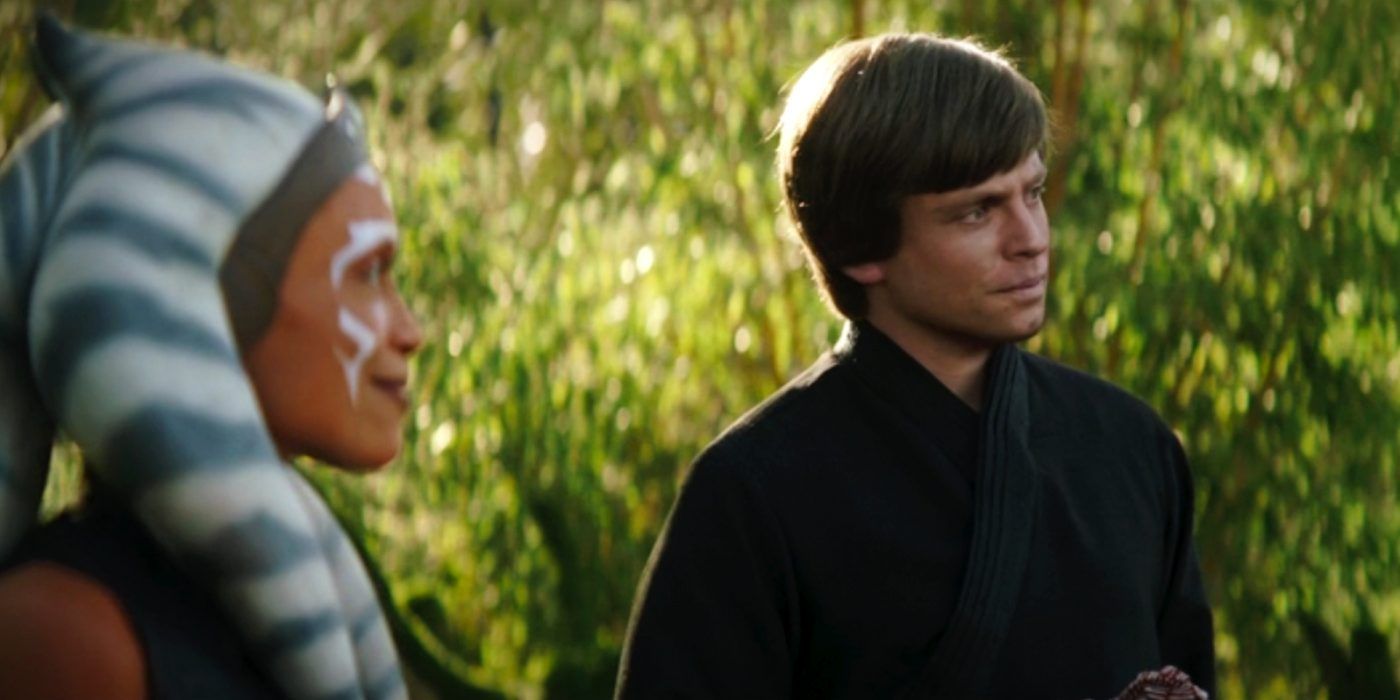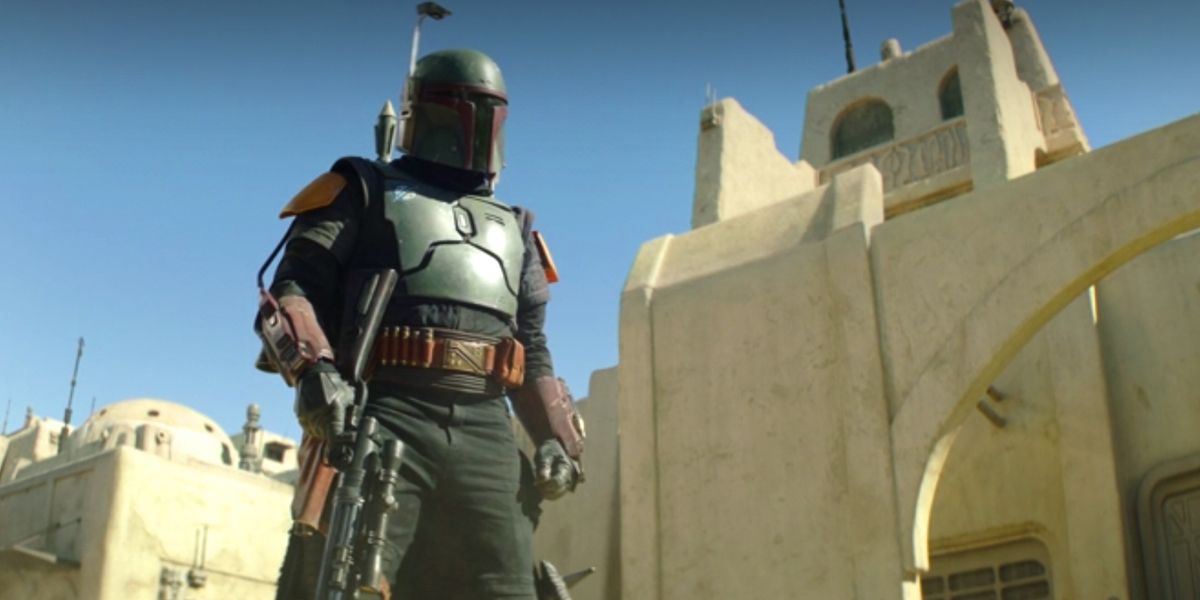Summary
- In the final shot of the Ahsoka finale on Disney+, a Star Wars legacy character makes a silent cameo.
- Some critics will call the cameo mere Star Wars fan service, instead of meaningful closure.
- The final moment is actually important for Ahsoka Tano's journey from Anakin Skywalker's Padawan to what she's meant to become.
The following contains spoilers for Ahsoka, Season 1, Episode 8, "The Jedi, The Witch and The Warlord," now streaming on Disney+.
One of Star Wars' greatest strengths is also the source of its greatest problems: fan expectations. Every fan who forswears the entire universe for one new film or another, just can't tear themselves away from the saga. For better or worse, each installment does try to service those fans by including connective tissue to the past while telling its own story. The Force ghost of Anakin Skywalker watching over Sabine and Ahsoka in the Season 1 finale of that series isn't just fan service. It's an important capstone on the story the show wanted to tell.
There is a visual and narrative poetry to Star Wars imbued on the universe by its creator, George Lucas. He deliberately included familiar settings, story beats and visual imagery so that each movie “rhymes” with the other “stanzas” in his epic. Whether Ahsoka can successfully stand on its own is up to each individual viewer. The series created by Dave Filoni was intrinsically connected to narratives that came before from his animated series to The Mandalorian. Still, despite all the in-universe references and stage-setting for a future feature film, Ahsoka did have its own story to tell. It was about the journey of its titular character and her apprentice in the wake of two personally devastating wars. They were perpetually unbalanced in the Force, something Ahsoka's former master Anakin Skywalker knows a lot about. The final moment in the series is there for story reasons, despite it being excellent fan service.
The Finale's Last Shot Honors Both Ahsoka's and Anakin's Journey
After Disney purchased Lucasfilm, the last Star Wars: The Clone Wars viewers saw of Ahsoka Tano visually mirrored the last shot of Ahsoka's finale. Only rather than Peridea (a planet in a new galaxy), it was outside the Jedi Temple. Ahsoka had just been cleared of murder charges, and Anakin wanted to welcome her back into the Jedi Order. Instead, she left the order and her master to find her own way. Anakin stood with his back to the camera in the foreground, as Ahsoka walked away into the unknown. Just like before, Star Wars fans will probably see Ahsoka again, but for now this is their last look at their hero.
Bringing Hayden Christensen back as Anakin Skywalker might seem like fan service, because it is. The kids who grew up with the prequels loved the character and the actor. They feel he deserves a second act given how heavily critiqued the prequels were on debut. Thankfully, there is a big Anakin-sized hole in Ahsoka Tano's post-Star Wars Rebels story. In that animated series, she discovers her master became Darth Vader and faces him in battle. Yet, thanks to Ezra and the World Between Worlds, she survives. Audiences saw her learn this painful truth, but they never saw her deal with it.
When Luke Skywalker became one with the Force in Star Wars: The Last Jedi, Rey told Leia when it happened she felt "peace and purpose" as he passed on. Ahsoka is still alive, yet she's found her peace and purpose. A better parallel would be Luke Skywalker at the end of Return of the Jedi. The mission that consumed her is over, and what she survived has helped her better understand her greatest ally, the Force. It's almost a narrative mistake to not also have included Obi-Wan Kenobi and Yoda in that moment as well.
Like Luke Skywalker, Ahsoka Tano Found Balance in the Force
Ahsoka's first appearance in live-action came in The Mandalorian, "Chapter 13: The Jedi," where viewers saw her capture Morgan Elsbeth. In that episode, Din Djarin asks her to train Grogu, and she declines. She hints at a darkness in the child, and her own connection to it through her master. Ahsoka gave this part of her journey new layers. Up until then, her brief moments of Jedi instruction to Ezra Bridger painted her as less reluctant a mentor than Kanan Jarrus.
Yet, Ahsoka never bore responsibility for him like she would with her own Padawan. She walked away from training Sabine Wren because she didn't trust herself to help her stave off darkness. Sabine Wren risked the pull of the dark side because of how the Empire killed her family in the purge of Mandalore. Yet, Ahsoka didn't trust herself. Anakin's final lesson to Ahsoka was meant to show her that destiny is a lie. Everyone makes choices and the responsibility for what happens after is on that person alone. All Ahsoka, or her Padawan, need to do is choose to turn towards the light.
The final shot of Ahsoka is also similar to the ending of Obi-Wan Kenobi. It's not that Anakin showed up to look over Ahsoka Tano and Sabine on Peridea. Like Qui-Gon, perhaps he's always been there, and now she can see him. Sabine senses him out there, but the look on Ahsoka's face before she walks away suggest she saw her master standing there just as Luke did before joining his friends at the Ewok celebration. An Easter egg for Return of the Jedi? Sure. But it's also an important moment in the decades-long saga of these characters.
Why Fan Service Gets a Bad Rap In Sagas Like Star Wars
The term "fan service" is often negative, but it shouldn't be. Audiences are savvy enough to recognize when it's done poorly. If the audience is willing to treat narrative references to past stories like they did mentions of "the clone wars" in A New Hope, the shows can stand on their own. However, that doesn't mean it's just fan service whenever a serialized story like Star Wars includes a legacy character, setting or narrative connection. It would be poor storytelling if characters' histories were simply ignored.
Any character could've filled the role of a sympathetic New Republic leader in Ahsoka, but it would've been strange if it wasn't Mon Mothma. Interestingly, the best defense of "fan service" comes from the other "Star" franchise. Similar characters, settings or story elements are part of the foundation of these universes. They are as much a part of its storytelling DNA as things like the Force, lightsabers or whatever else makes Star Wars feel like Star Wars.
The people telling these stories are those who grew up as fans. Dave Filoni famously was working on a Plo Koon cosplay when he took the interview with Lucasfilm to run The Clone Wars. They don't do it because it's what the audience wants; they include what they do because it's what they want to see. That's how every good story comes together. The last shot of Ahsoka does have a narrative impact, but Dave Filoni probably also thought it was really cool.
All eight episodes of Ahsoka Season 1 are currently streaming on Disney+.




